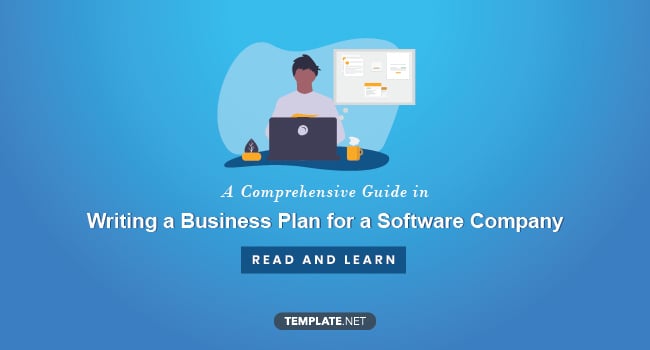How to Write a Business Plan for a Software Company
In starting a business, products and customers are not the sole factors that make your software company grow. A plan of action is needed, and what better than a business plan to serve as a written instrument for shaping your company’s future. Having one helps you prepare for inevitable challenges like rising competitors, technological disruption, and financial setbacks, just to name a few. Those who need help in creating one can read on to discover the essential sections that make up a software company’s business plan.

How to Write a Business Plan for a Software Company
Define the Vision and Mission of the Company

Behind every successful company are vision and mission statements that maintain the goals and standards of its management and its people. In defining your company’s vision, you should have an outlook on how your products or services will change your community and even the world in the long run. Your vision’s content should be about your purpose, and how you see the future change for the better with your inventions. What does your software company do? How can your products and services prove their significance to the people?
These two are the questions that will guide you in making a good mission statement. Your mission should state a summary of what you wish to deliver to the people you serve, and how you can change or improve the situation of your customers. By having a good vision and mission statement, your company will awe the market with your real purpose and exciting products, and your company’s people will also remember why you put up your software business in the first place.
Company Description

If a mission states a summary of what you do and who you’re doing it for, your company description, on the other hand, should enlighten the people about your company profile and the products and type of IT services that you offer, whether it’s tracking or web development.
Type of Company Ownership

The company ownership will depend on the size of the business and the rights and responsibilities of the founders. Depending on the form, you might need to consult a lawyer and an accountant for legal reference. You may choose whether it’s a sole proprietorship, general partnership, corporation, or s-corporation. If you are the only founder and financier of your software business, your ownership form is sole proprietorship. This means that you have the sole rights to your company. The general partnership form involves two or more owners of the business.
The corporation is a separate entity run by shareholders, and it will undergo the process of the state government for tax requirements. Since the corporation is a separate entity from its shareholders, it also has its separate tax from the shareholders who will pay their own taxes from their profit in the company. Shareholders still own the s-corporation, but it undergoes a validation from the federal government and has a restricted number of shareholders. This type of corporation will not pay tax as a separate entity; instead, its revenue will serve as a personal income of the shareholders and you.
Industry and Market Analysis

To know if your business plan is feasible, it is essential to make sure that your production can be continuous by checking if your suppliers are easy to reach. You should also know how your prospective competitors are doing with their products and services in your industry so that you will have an idea if there’s potential growth in your project.
The market analysis, on the other hand, is knowing who your customers and competitors will be. By conducting surveys or interviews, you will gain an estimate of the number of people who are willing to spend to experience your software, as well as their personal references and struggles. It is also an essential part of the business plan because you will know where you will stand out and which parts of your software will need improvement.
Target Market
The potential buyers of your software are your target market. Since you are building a software company, there’s a higher chance for you to succeed in getting customers online. With proper strategies, you can attract millions of internet users.
Competitive Analysis
By analyzing the strengths and weaknesses of your competitors, you will also know what you can do to generate more sales and what to avoid.
Service (or) Product Line

This section is where you will outline what your product is, why the market needs it, and what will make it stand out. You will also state here the future developments you wish to introduce to the market in the future.
Funding

Do you wish to use your personal savings for your budget? Either you plan to fund yourself or want to borrow money from your personal connections or financial entities, this section will be a useful reference for your funding method.
Operations

If you wish to reach investors, this section will be helpful because here, you will state your company’s goals and objectives, as well as the schedule of your employees and the timeline of projects.
Management

In this section, the responsibilities of your management team are tackled, and an organizational chart is shown. You will also state here the qualifications and standards you expect from your chosen managers, as well as possible meeting minutes and timeline for leadership seminars or pieces of training you wish to conduct.
Financial Projections

The financial projections section will contain lists of your profit and loss statement, cash flow, balance sheet, and a summary of your financial transactions. The better the profit and the more organized financial report, the more likely you can have interested investors for your business.
Profit and Loss
The profit and loss statement is a list of all your monetary transactions and your projected income for a year. From the forecasted income and expenses, you can determine your projected net income.
Cash Flow
In the cash flow, you will enter your estimated sales in cash per month. You will also put here your expected payables per month and the carryover from the financial operations of the previous month.
Balance Sheet
The balance sheet is a report of your company’s assets, liabilities, and equity. Assets are the tangible financial objects that your company owns, liabilities are the debts that you owe, and equity is the profit your company makes and the investments put to operate the business.
Key Financial Indicators
Lastly on the financial section will be a summary if your company has the potential financial growth, profit and if you can settle your financial obligations and maintain proper accounting. This will also be the conclusion if you will be able to use your profit wisely to expand your business.
Advertising and Marketing Strategies

According to The Balance Small Business, there are 4 Ps of business, which are the product, promotion, price, and place. In your marketing strategies section, you need to define each P of marketing as guidance on your next marketing steps. In this section, you will write the motto of your company that will stand out. Now that you already know your target market from your market analysis, you will also include the information here for clarity of who your products are for. Lastly, you will write here your advertising ways, either through social media platforms, brochures, flyers, fact sheets, videos, or through socializing.
Once you see that everything is already organized and planned out, it will be easier for you to use it for project management to grow your business. Every company has its own rainy days, and a business plan in writing will give you a tangible reference to keep you going in building your business empire.






